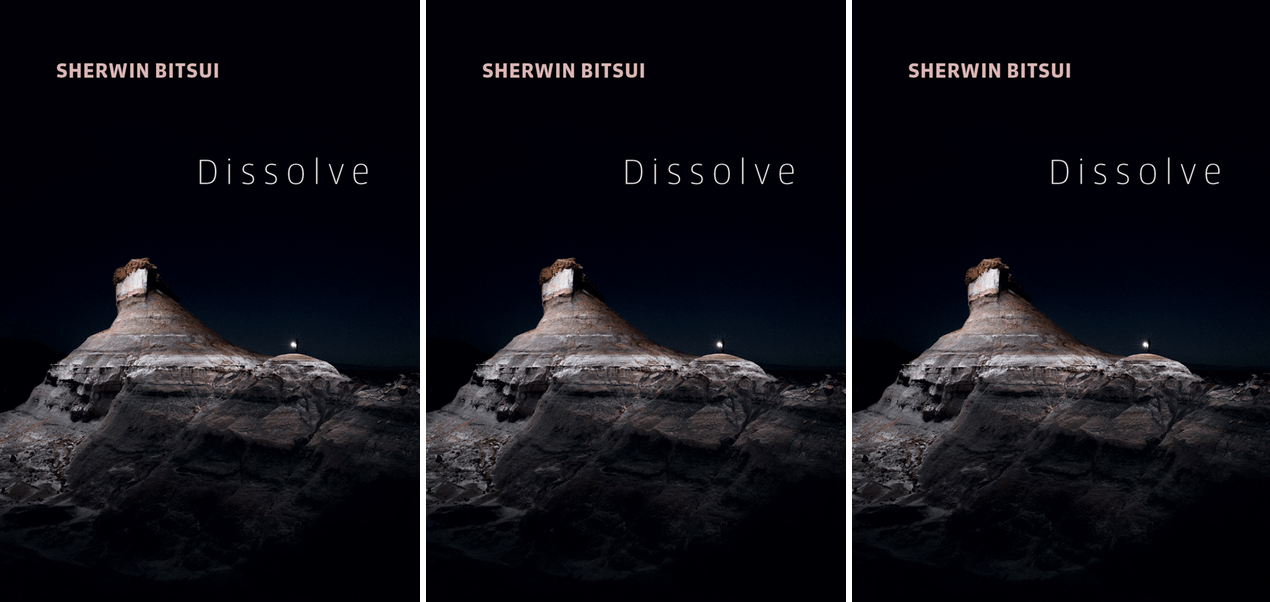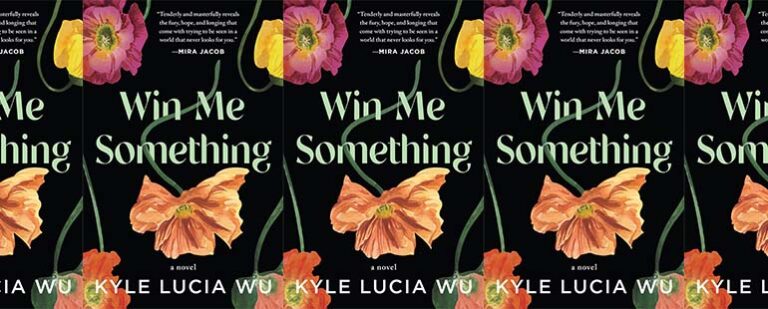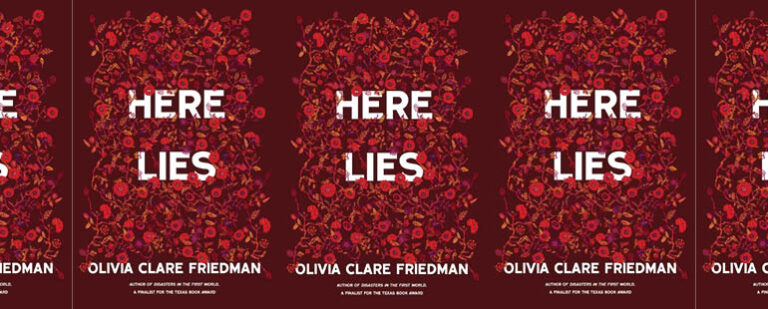Dissolve by Sherwin Bitsui

Dissolve
Sherwin Bitsui
Copper Canyon Press | October 30, 2018
“This poem,” writes Diné poet Sherwin Bitsui near the beginning of Dissolve, “pivots a walking cane…It climbs cloud hair / only to fall back upon red soil.” Indeed, from its opening lines, Bitsui’s work announces itself as a symphony of sweeping movement and stark contrasts. As it strides into the future of its own becoming, it “step[s] upon black braids, / oil-drenched, worming / from last month’s orphaned mouth.” Its lines “imagine a canyon floor, / cornstalks growing in rows / along a sunlit sandstone wall”—then shift their gaze to “a field of moonlight / double-parked in snowmelt.” Its voice “wears the fog’s yellow ankles”—but finds “scalp blood in [its] foot prints.” A brilliant and timely collection, Dissolve asks readers to consider the most elemental questions—“How the map must look / when black water is ladled / from white water”—while unfolding new ways of seeing and speaking of the elemental world itself.
As in Bitsui’s previous collection, Flood Song (Copper Canyon Press, 2009), Dissolve takes its shape and draws its subjects from both Diné tradition and the geographies of the American Southwest. Following a prefatory poem entitled “The Caravan,” Dissolve presents a book-length lyric sequence, entwining objects, landscape, and language in complex entanglements that challenge and reward careful, deliberate reading. The images that introduce the collection’s various sections—“limbs of slanted light,” “blurred eyes,” “a paralyzed wail”—often suggest the suspension of mimetic security that their engagement demands, and Bitsui’s lines are most revealing when considered slowly and repeatedly from all directions:
There’s a way out—
walk the dirt road into cerulean dawn,
tap with clear fingerprints
the windows of cars and trucks
rattling down Highway 77,
and clasp the nine eyes of the desert
shut at the intersection of then and now.
Throughout Dissolve, lines are defined by their embrace of the inexact, from swarms of houseflies and “hornet clouds” to shifting shapes of lake mist and “necklaces of smoke.” Bitsui’s frequent juxtaposition of contrapuntal imagery seems designed with similarly uncanny intent:
Radio waves groan
under ashen dragonflies
when you polish irradiated triggers
with scalped hair.
Yet such moments refuse either aesthetic alienation or nihilistic dread. Rather, their accumulation produces an opposite effect, drawing readers toward both the work’s affective core and its material conditions alike. Here, the world of Dissolve becomes one of tangible closeness and sharp relief, as in the following lines near the poem’s conclusion:
A chopping block’s cobalt hum,
mothing braids of summer lightning,
lulls a hatchet’s handle loose
then capsizes children
aiming their flint spines toward
steering wheels thawing in house fires.
Suckled by shadows, suckling their feet,
enrolled in a disappearing act,
they hand-stitch starless skies
to their temporary faces.
Their scraping is a smear facing another smear.
Their sky’s blue veins are horses neighing through them.
Their dream of lightning dreams.
Likewise, Bitsui’s work is particularly remarkable in its portrayal and philosophy of the natural world. Dissolve’s landscapes refuse verdicts of passivity and objectification. Rather, they insist upon defining themselves as both organic processes and vibrant matter: “This mountain,” Bitsui writes, “stands near us: mountaining.” Line after line, nature, in various forms, expresses itself as an active verb. Dawn dawns and sunlight sunlights, while “land…crawl[s] out of anthills” and “a bottom-lit sea ponders the lake’s questions.” Even the linguistic challenges that Dissolve presents, its belief in “no language but its rind / crackling in the past tense,” often underscore a similar argument: the understanding that, from “ellipses / evaporating from ollas of fragrant wet clay” to the “semicolons coughed out by the final raven / [that] sizzle the hand’s parched memory,” language is shaped by—indeed, emerges from—the earth itself.
At the center of Dissolve, a single line repeats four times: “I breathe it in.” These inhalations encapsulate both the rich density and the immersive capacity of Bitsui’s work. His lines are multivalent as “mud-splattered thought patterns / [that] sift into the stems of a sandpainting / of a tree of birds on a factory floor” and they resonate in multitudes just as “the dark before me, unfolded from bead-pressed earth, / sparkles, groans, whistles.” Dissolve reverberates across time and space with unique vision and meticulous craft, returning time and again to “the beginnings of our eyes,” demanding nothing less than to breathe in “the new there / thickening in thinning air.”


